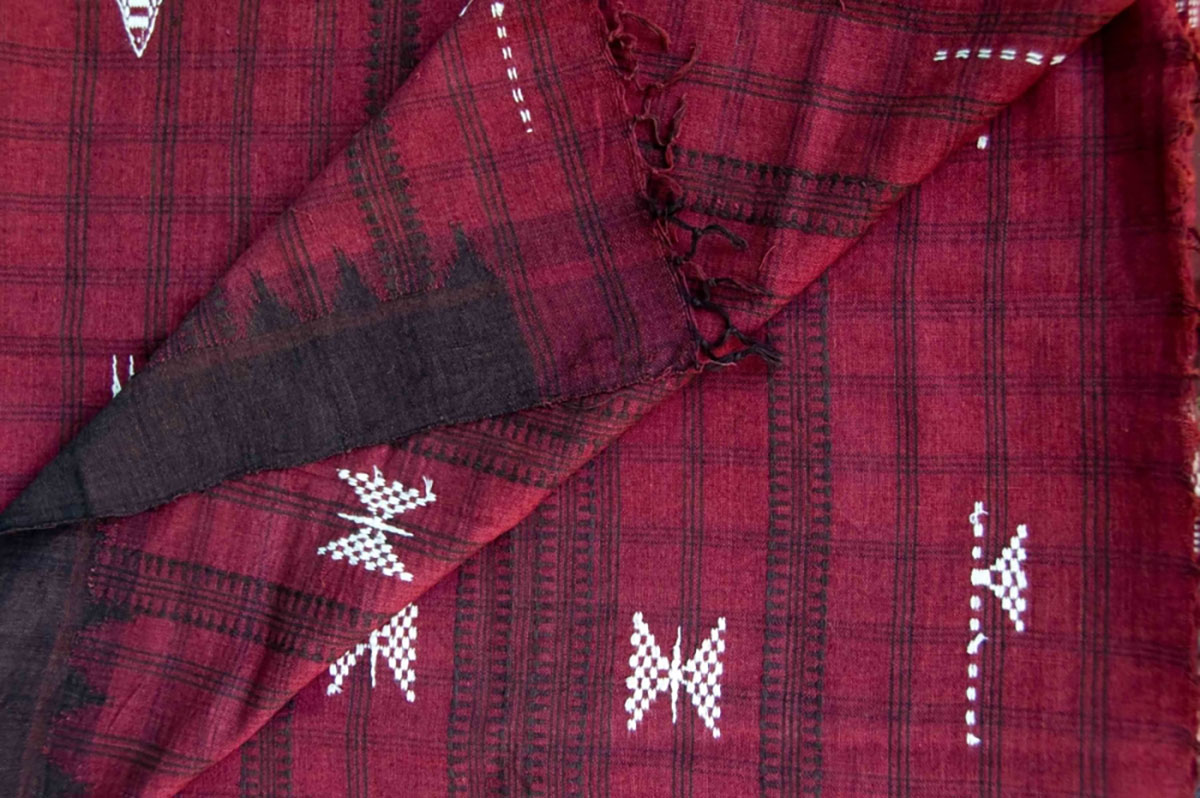ARTICLE
Aal Dye
A deep red natural dye produced from the roots of the aal tree (Morinda citrifolia or Indian mulberry), aal dye is predominantly used by the Panika community of Bastar, Chhattisgarh and Kotpad, Odisha to dye textiles worn by the Panika, Gond, Muria and Maria communities of the region.
There is some evidence that the use of aal dye was widespread historically and that it was once exported to the Mediterranean region; textile fragments containing the dye, dating to the first millennium BCE, having been discovered on the shores of the Red Sea. However, textiles using this dye have not been sold on the general market in recent history.
The traditional method of preparing the dye begins with gathering the roots of an aal tree that is between three and four years old, since the roots of older trees lose their pigment. The thin roots are selected, dried, ground into powder at a mill and added to a vat of boiling water to prepare the dyebath. Prior to this, the yarns are prepared for dyeing over nearly two weeks by rinsing and repeatedly dipping them in pots of water mixed with castor oil, after which they are covered in liquefied cow dung, wrung and dried. Wood ash sourced from household kitchens is mixed with water and left to settle overnight, after which the water is separated out. The yarns are then dipped in the ash water and wrung multiple times a day until they froth from the process, indicating that they are ready to be dyed. The alumina dissolved in the water from contact with the ash helps the yarn gain a deep, rich red during the dyeing process. Once the yarns are dry, they are added to the boiling dyebath and stirred continuously until the water evaporates, then dried and dyed again for two or three cycles. In cases where a deep brown colour is desired, iron sulphate is mixed into the dyebath on the third cycle. The resultant colour of the yarns is resistant to washing, light and heat.
The roots are harvested and sold to the Panika community by the Parja, Gadva and Muria communities. The women of the community begin dyeing cotton yarn from a young age, and the men weave the yarn into their traditional clothing. Yarns dyed in aal dye are used to make headcloths for men and sarees for women. The dye is known to have a cooling effect, providing some relief to wearers who work extensively in the sun.
While aal dye continues to be used today, the level of dye production has drastically reduced owing to the commercial availability of synthetic red and brown dyes as well as finished cotton fabric. The Kotpad Weavers Cooperative Society, founded in 1956, lobbies for government aid on behalf of the dyers and weavers and aids in creating a contemporary market for these goods.
Bibliography
Our website is currently undergoing maintenance and re-design, due to which we have had to take down some of our bibliographies. While these will be re-published shortly, you can request references for specific articles by writing to hellomapacademy@map-india.org.







